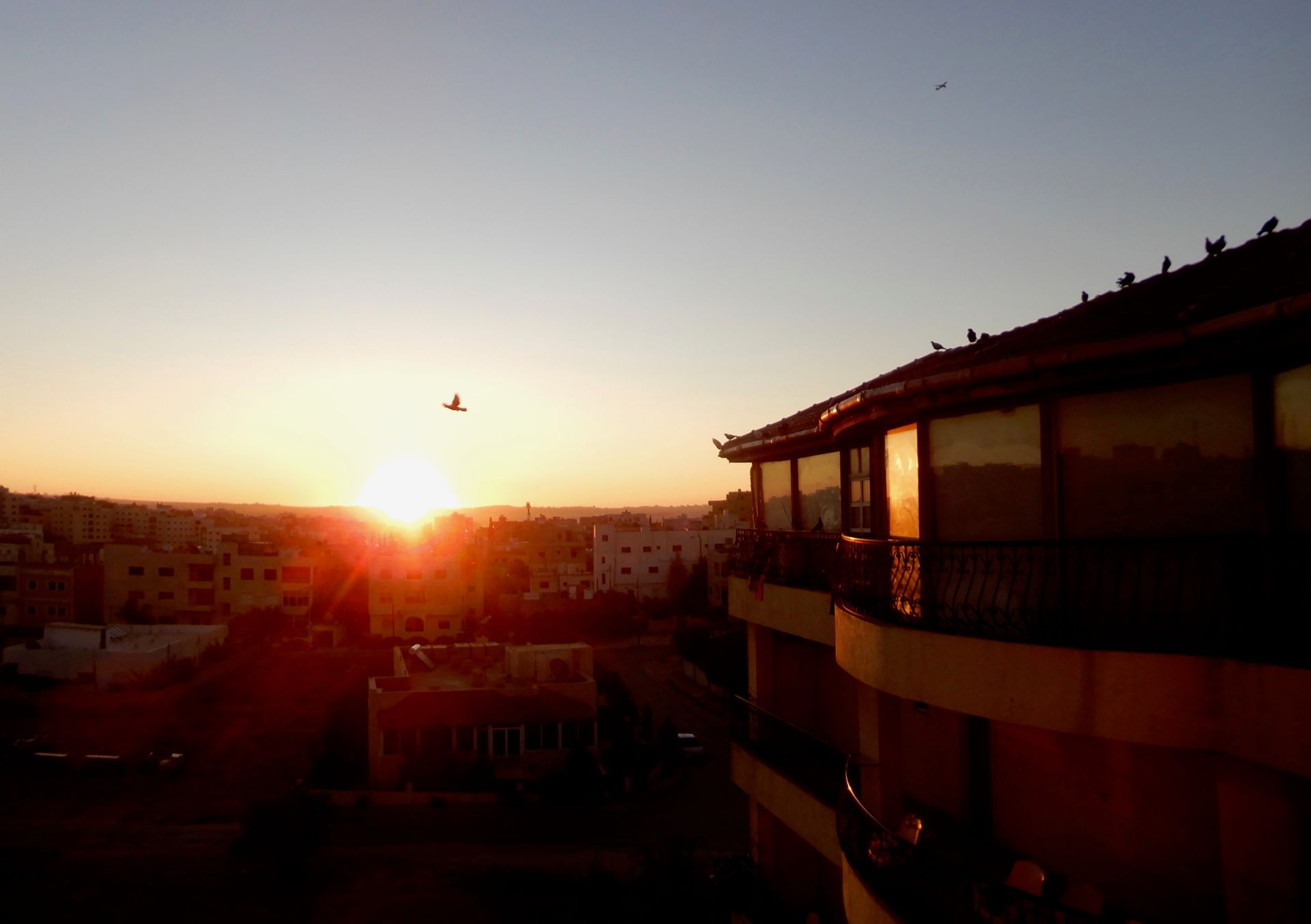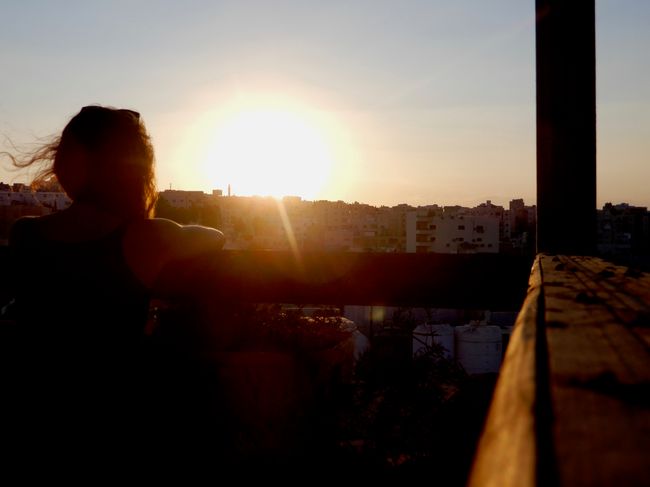Hebron. The divided city.
Diterbitkeun: 05.02.2020
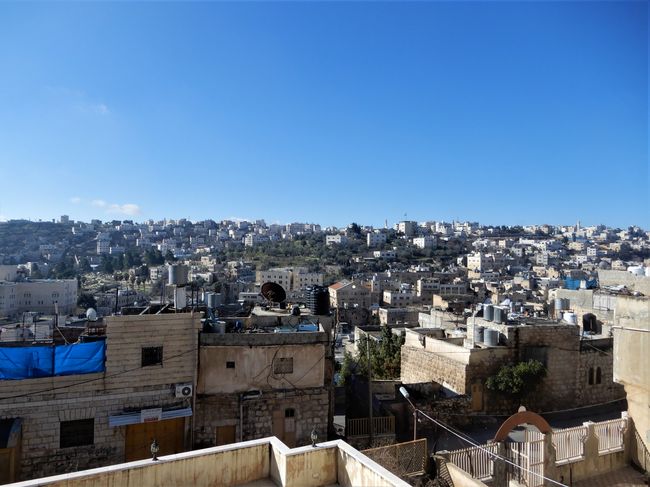
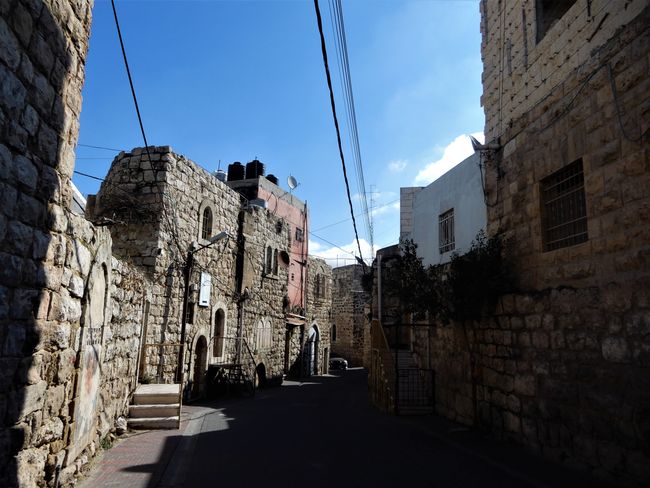
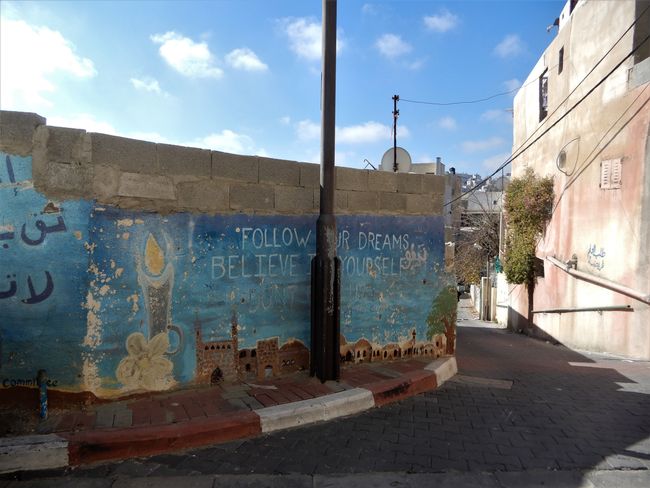
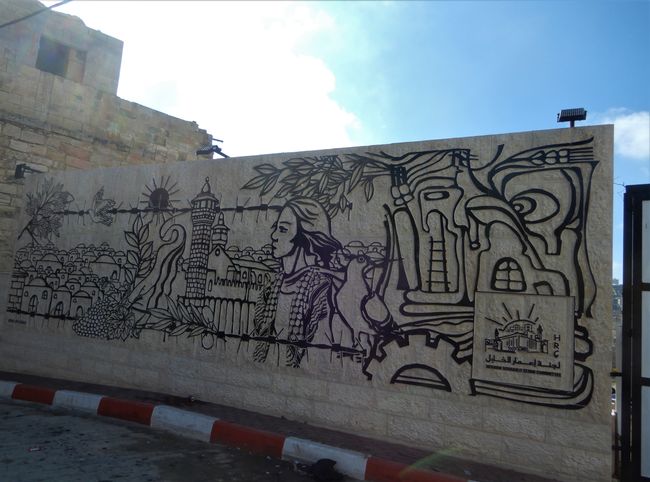
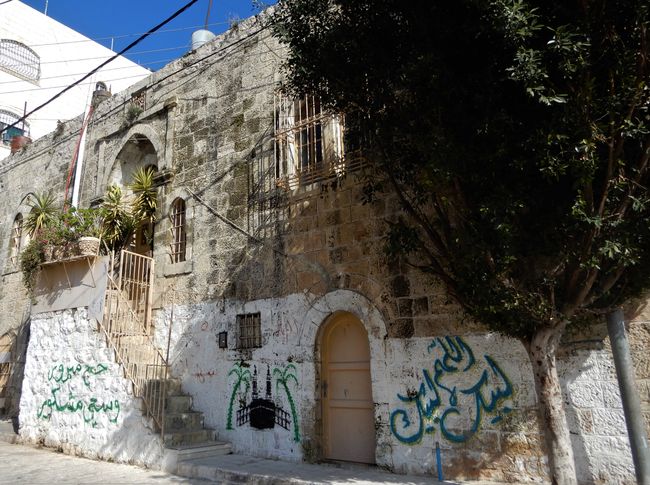
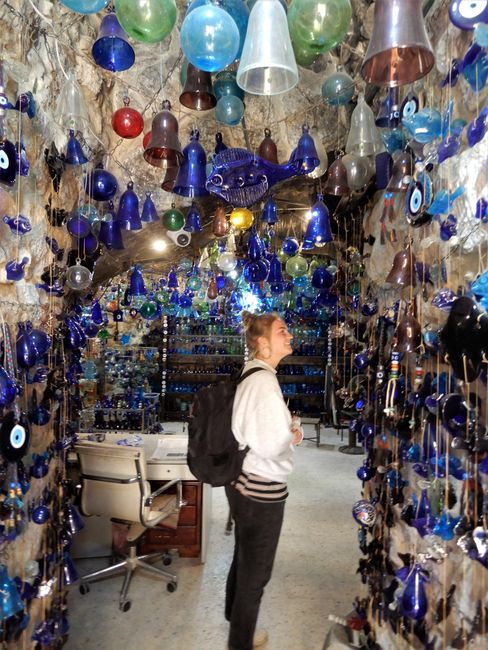
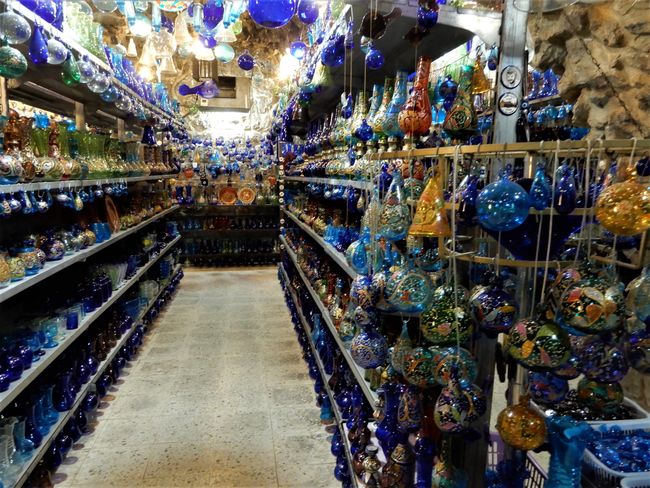
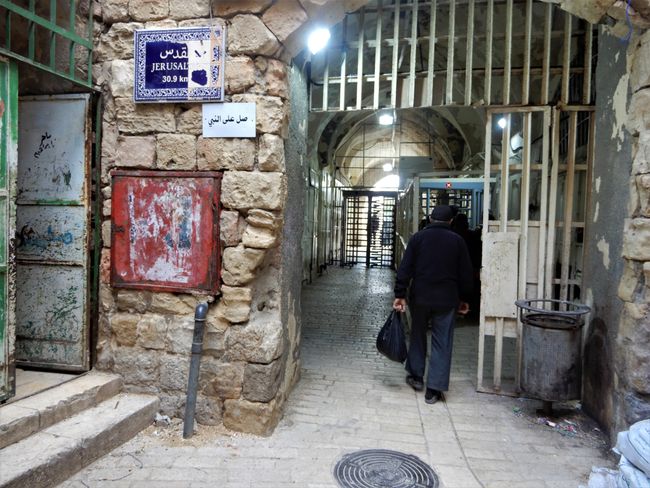
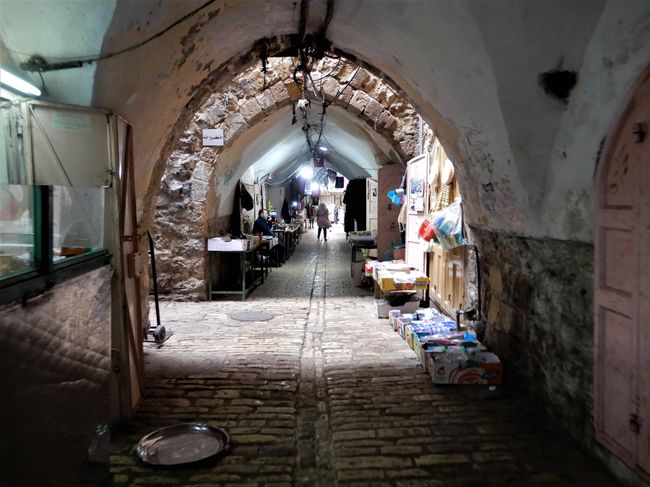
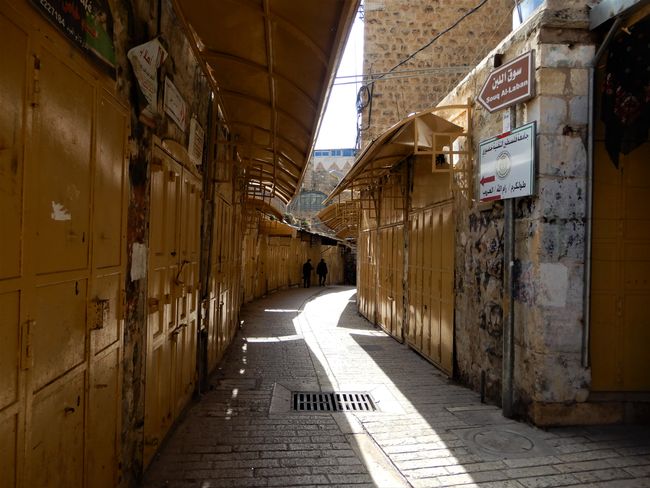
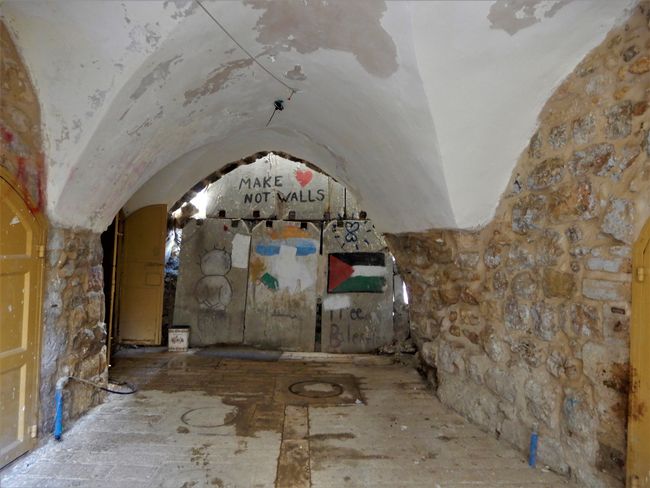
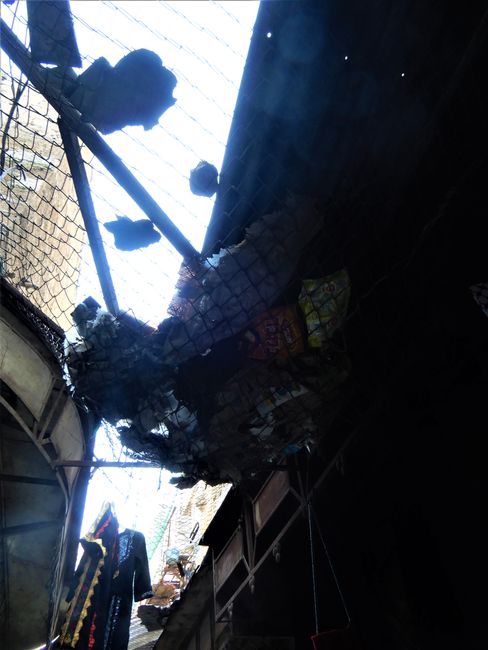
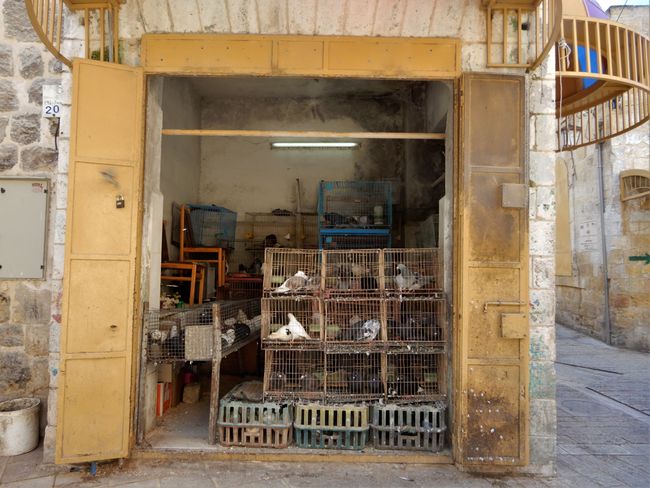
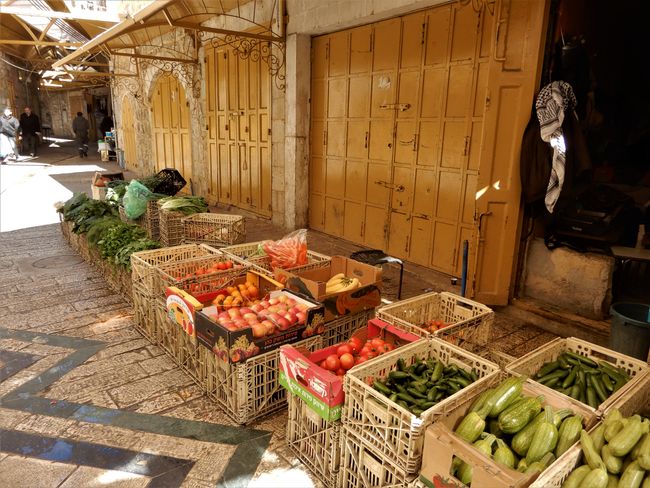
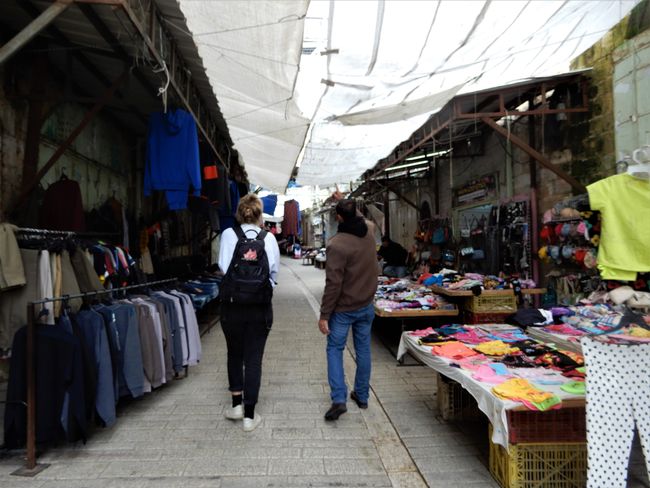
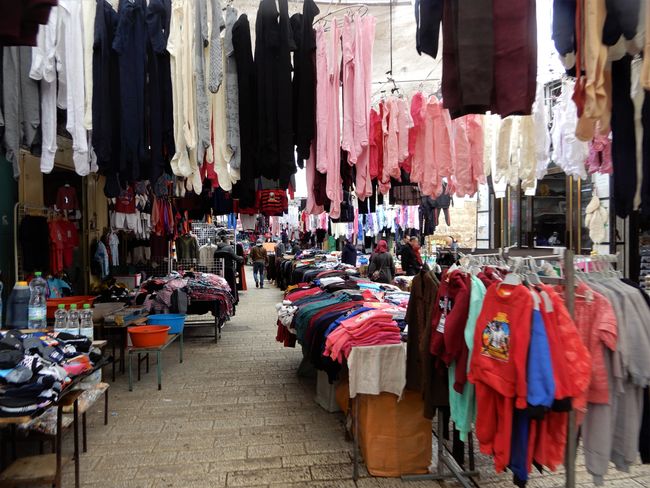
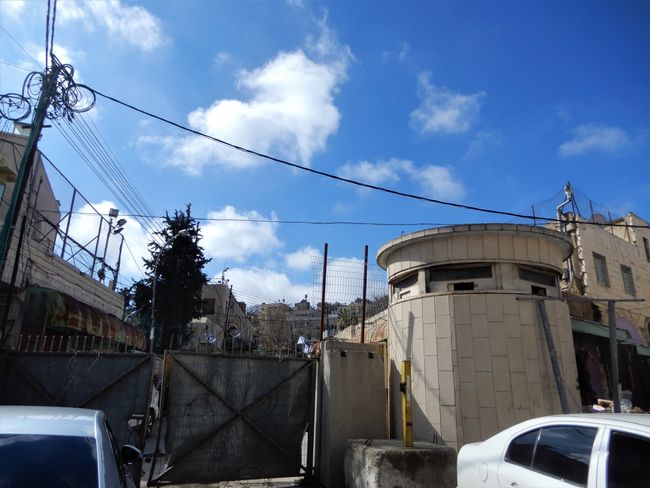
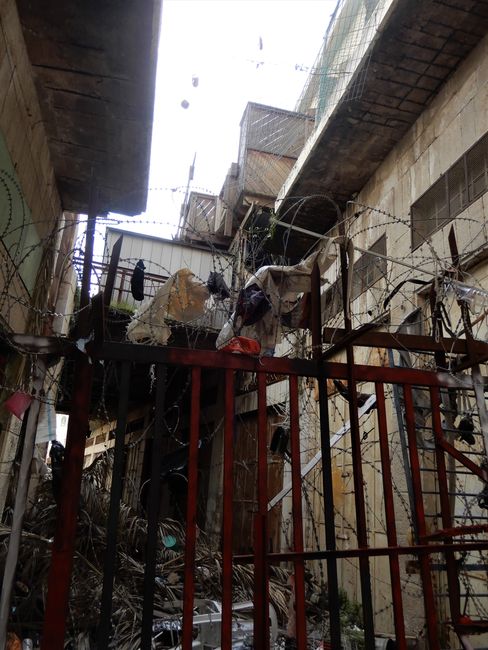
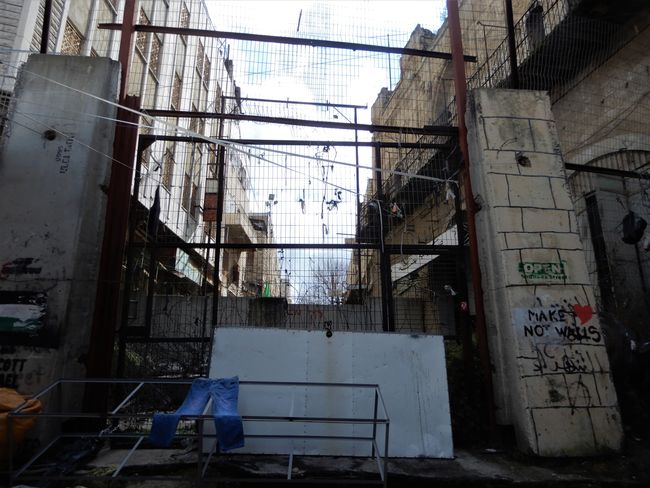
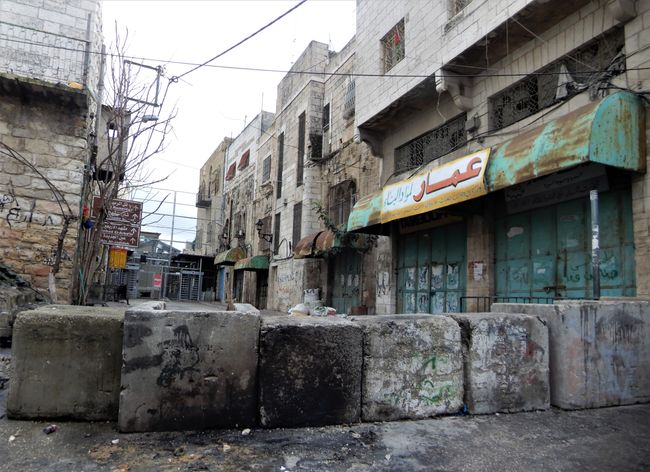
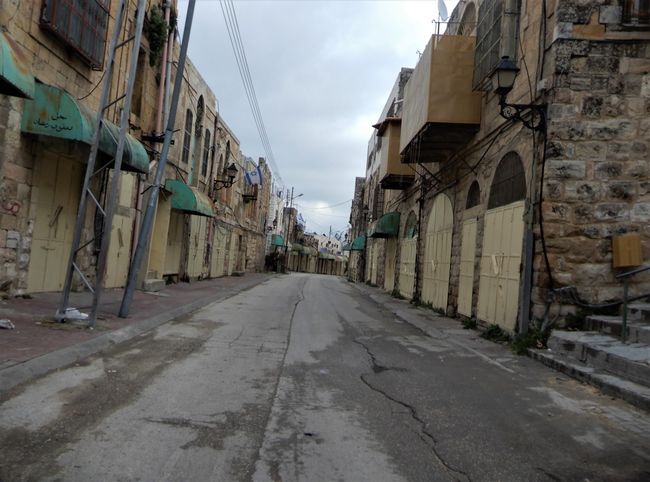
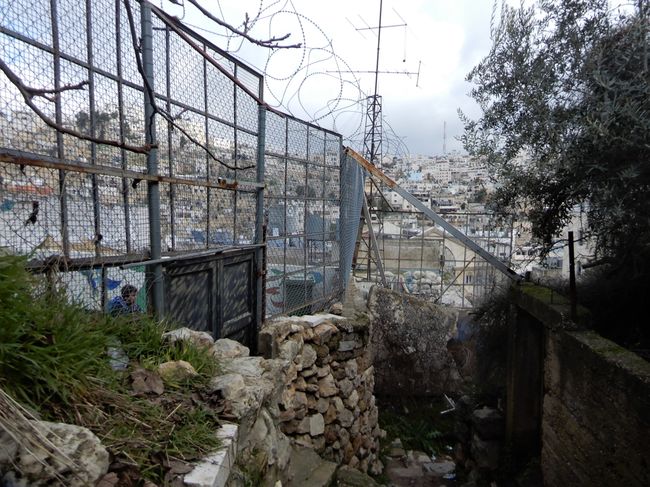
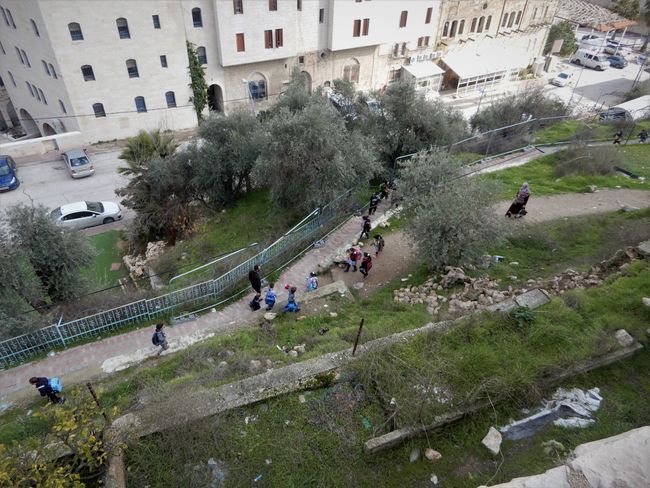
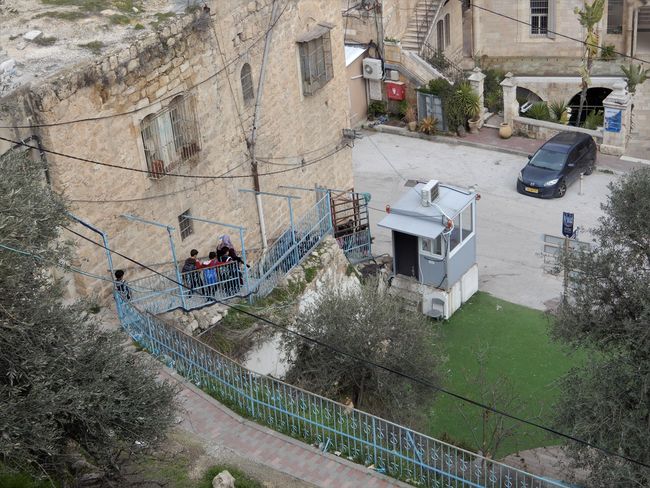
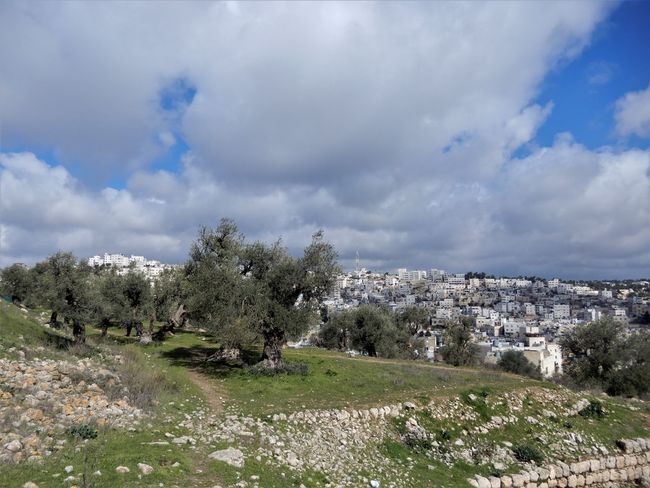
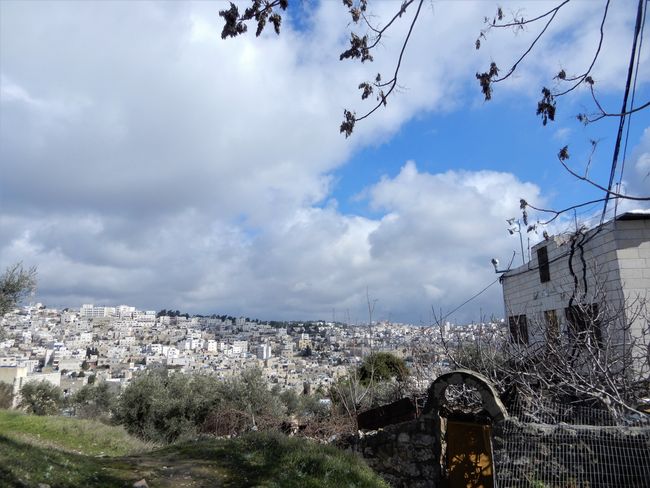
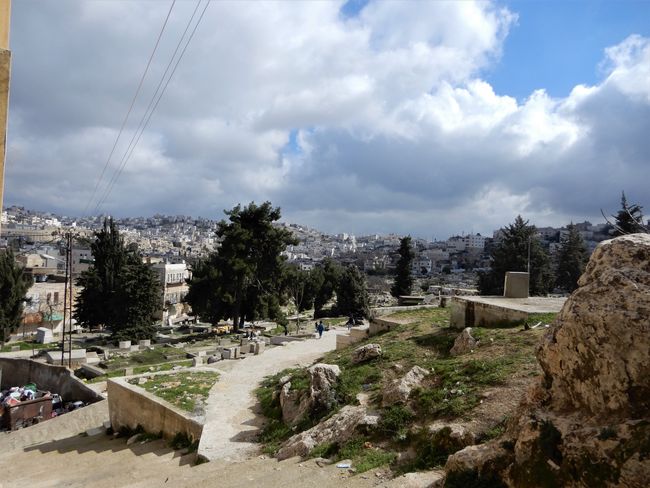
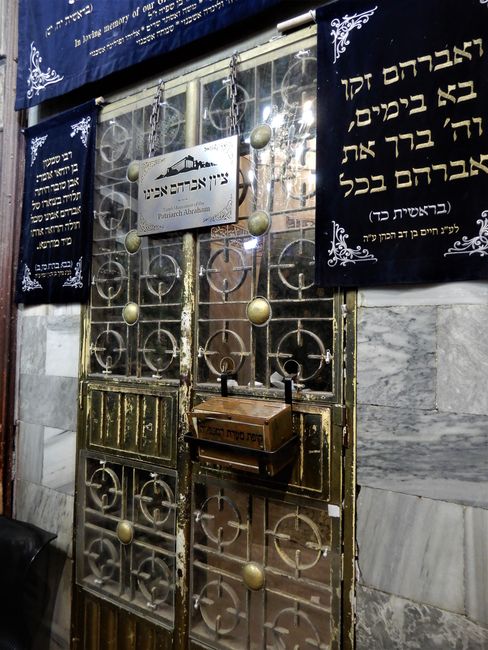
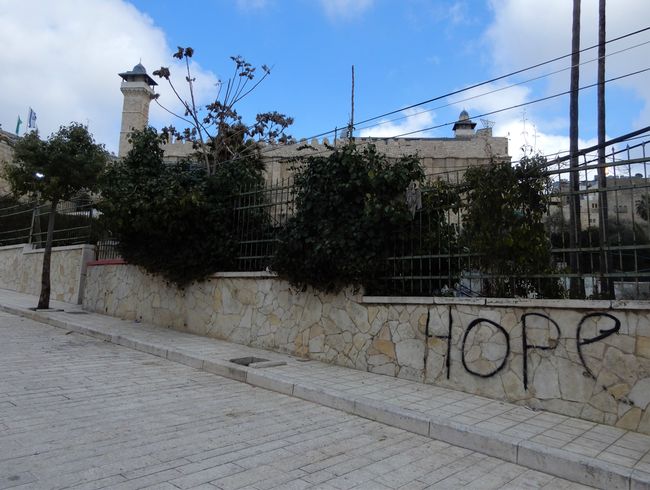
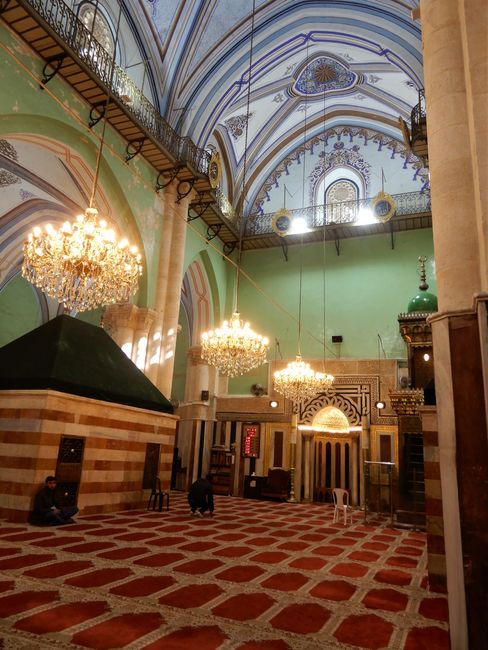
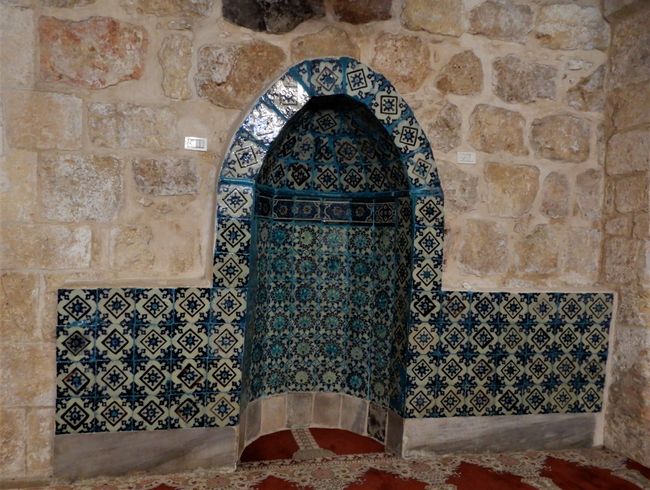
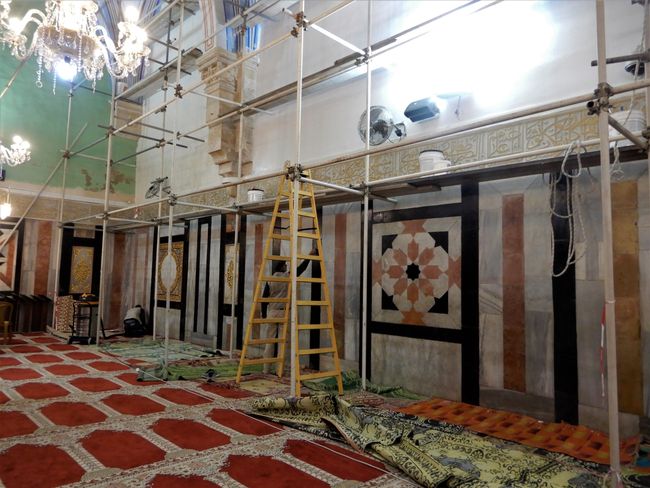
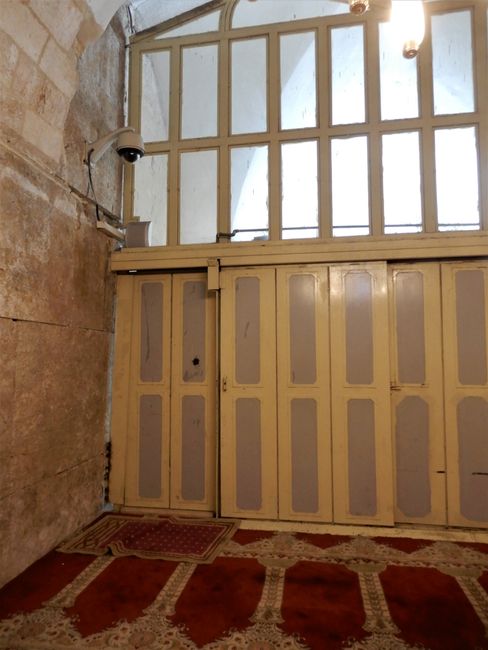

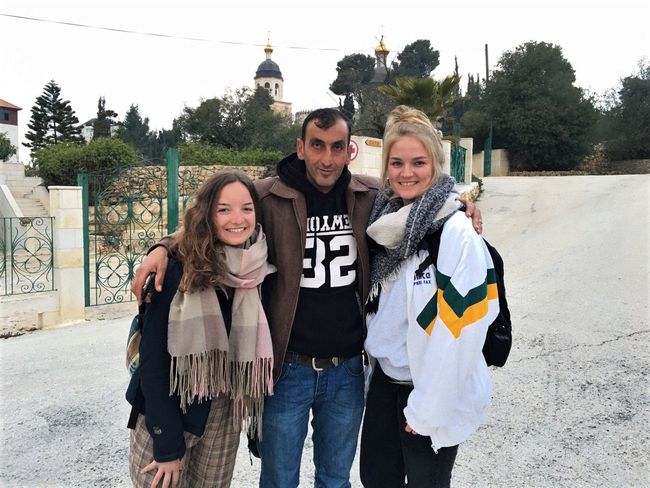
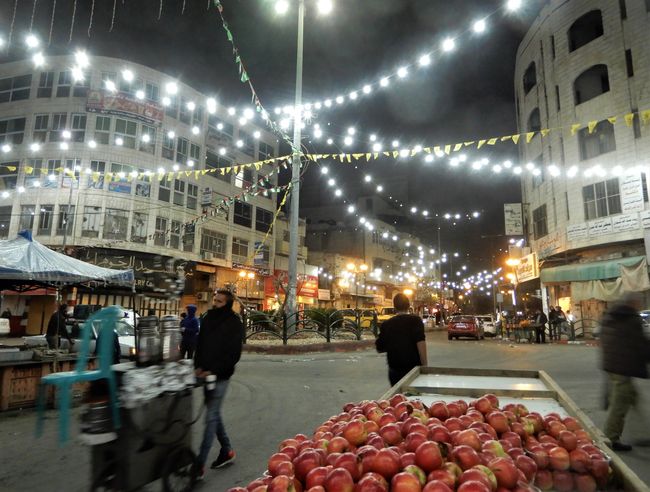
Ngalanggan Newsletter
Tuesday, February 4th
7:30 am. I sit in the hostel's common room with my laptop until Lea joins me after having showered, and then I also get ready to go out. The bright sun shines through the large glass doors of the hostel. So let's go, walking towards the Old City.
Today we decided not to have breakfast at the hostel, but instead see what Hebron has to offer along the way. In less than 10 minutes, we reach the Old City, where most of the yellow doors behind which the shops are hidden are still closed. Maybe it's not common here to have breakfast early or shop in general. So, we first enter a glassblowing shop - we have already read that Hebron is known for its glassblowing craft. Unfortunately, the big furnace is not in operation. The owner tells us that they have run out of oil. But In sha Allah, the business can resume operation tomorrow.
Alright then. We continue strolling along the street until we reach a revolving door at the end, which separates the sidewalk into two parts. A checkpoint. We have heard about these. There are several of them in Hebron, usually to "secure" Jewish settlements located in the middle of the city. In some cases, Palestinians are completely prohibited from passing through such routes. However, at this checkpoint, Jews are separated from Palestinians by a mesh barrier in the middle of the street to avoid clashes.
We are not yet ready to pass through the checkpoint, so we walk in the other direction instead. It is now late morning, but most of the shops in the Old City are still closed. Lea asks at a shop on the corner and promptly gets the answer. "They are closed! Second Intifada!" We are almost ashamed to have brought up the topic here. After all, we know that there is also a street in the Old City that was completely sealed off for Palestinians after the last major Arab-Israeli conflict, which resulted in all the shops there having to close. For a brief moment, we had overlooked the consequences this had for the rest of the Old City. Unlike Al-Shuhada Street, however, the people here were not forced to give up their shops, as the shop owners now tell us. The business after the increased occupation and division of the city into two parts (more on that later) was simply so bad that most shop owners were economically forced to close their shops. I can only shake my head at the closed doors. I hadn't imagined it to be so extreme.
We continue our way through the Old City, where the few shop owners who still have their shops open desperately try to convince us to buy something. Looking up, we also notice that there is a settlement in the upper rows of houses here. Metal mesh covers the Old City as protection - garbage and feces regularly fly down from the settlement above. A man approaches us at an intersection. It turns out that he occasionally works as a tour guide and leads tourists through the streets of Hebron. We hesitate when he asks if he should accompany us for half an hour, as we don't really want to spend money on a guided tour. He quickly understands what it's about and says that he doesn't want anything for it. We are still somewhat unsure, but eventually agree.
And that was a really good decision. Thalal, as he now introduces himself to us, leads us through the alleys and explains where the settlements are located here. That is crucial for the lives of the neighboring Palestinians. About 2,000 Palestinian shops were closed due to the settlements, more than 400 of them forcibly by the army. Slightly more than 800 Jewish settlers live in downtown Hebron, protected by 650 Israeli soldiers. However, Thalal tells us that the settlers are not usually visible in everyday life. Only on Saturdays, on Shabbat, they usually take tours of the city to show other settlers Hebron. Such tours are always strictly guarded by the Israeli military.
We continue through a market that has moved here from the Old City due to poor business. But even here, the shops are only doing moderately well, as Thalal tells us. But Hebron is a holy city. No one here has to go to sleep hungry. People help each other. We are given some freshly roasted nuts by his friends at the market and then find ourselves in front of another revolving door. The entrance to Al-Shuhada Street.
In 1998, as part of the division of Hebron and the resulting settlement for Palestinians, Al-Shuhada Street was closed to Palestinians. Hebron is now divided into two parts: H1 under Palestinian control, and H2 under Israeli control. Al-Shuhada Street is also a special case. Only a few Palestinians who still live there are allowed to enter this street. Otherwise, only Jews (or Christians) are permitted to enter. Where there used to be bustling activity, there are now closed doors. This part of Hebron is also called Ghost Town.
At the checkpoint, we have to show our visas and are waved through as soon as we say that we come from Germany. Thalal has a special permit and can continue to accompany us for a while, until we stand in front of the next revolving door. Here, he is also denied entry. A young Israeli soldier lets Lea and me through, and we walk up a few stairs from where we have a beautiful view of the city. The midday prayer now echoes from the mosques with Israeli flags fluttering. It is a truly grotesque image. Below us, we hear children's voices and see Palestinian children running out of an elementary school located here in Al-Shuhada Street. Carefree, they seem to skip past the Israeli checkpoint.
We continue up a few more stairs and find ourselves in an olive grove. Everything up here seems strangely calm and peaceful. As we descend on the other side, we pass by a cemetery where Palestinian children are playing with a toy gun. The contrasts in this city are really hard to put into words.
Back in Al-Shuhada Street, we walk through the empty alleys with information boards on the sides that tell a different truth from what we just heard from Thalal. From an Israeli perspective, the street here is closed due to Palestinian terrorism. And the soldiers and checkpoints are necessary to protect the settlers, who are already highly restricted in the city. Other signs show pictures of Israelis who were killed in Israeli terrorist attacks. Of course, it is not easy for us to form an objective picture of the situation here. But we do wonder why someone would choose to settle here, knowing the military effort and the consequences for the local residents.
We now arrive at Hebron's most important building: the Al-Ibrahimi Mosque, also known as the Cave of the Patriarchs. According to Judaism and Islam, the graves of the patriarchs Abraham, Isaac, Jacob, and their wives Sarah, Rebecca, and Leah are located here. What was originally a church was declared a mosque by the Egyptian Sultan Saladin in the 12th century. Nowadays, the building is divided: half synagogue, half mosque. But more on that later. There are now two entrances to the building: the entrance to the synagogue is only allowed for Jews, and the entrance to the mosque is only allowed for Muslim believers. As Christians, we are allowed to enter both sides and start with the synagogue.
We now know about the many checkpoints in Hebron, but the sight of heavily armed young people there is still unsettling. Weapons are not allowed here, as the sign above the checkpoint tells us. We walk through the detector, which beeps, but no one cares. The soldiers at the checkpoint sit in a circle and chat. As we pass by them, they want to know where we come from. "Germany? Are you Christian?" We nod. "Okay. Enjoy!" The fact that we are Germans and also Christians apparently rules out any possibility that we could be dangerous.
We enter the synagogue, where we find Orthodox Jews studying the Torah. Everything inside also seems somewhat improvised. The shelves with the Torahs, which look somewhat out of place on the walls, and partitions made of thin material in front of the two-tone stone walls that one usually sees in mosques. Further inside, we now have a view of four of the holy tombs, which can be viewed through glass windows. We observe a few Orthodox Jews swaying with their Torahs in front of the walls during prayer and then leave this part of the building again, making our way to the Muslim side.
Here too, we pass through a checkpoint and then have to put on a hooded cloak hanging at the entrance before entering the mosque - we are already familiar with this from our previous visit to a mosque. Next to us, another German tourist is putting on a cloak, accompanied by her boyfriend and a Palestinian. He offers us the opportunity to listen while he explains something about the mosque. We already know parts of the story he now tells us inside the mosque, but it doesn't change its tragedy.
In 1994, during Ramadan, extremist settler Baruch Goldstein entered the mosque. He waited until the people in the crowded mosque leaned forward to pray and then opened fire. 29 Muslim worshippers lost their lives at that time, and hundreds were injured. Goldstein himself was overwhelmed and killed, after which the mosque was initially closed. When the Israeli government reopened it, the mosque was divided. Since then, the building has been half mosque and half synagogue. Even though I now hear about the massacre and its consequences first-hand, it is still difficult to grasp. And I still don't know what to say about it.
We leave the mosque and now we need to fill our stomachs - we still haven't had breakfast. We find a restaurant in the Old City where the friendly owner approaches us and offers us hummus, galaieh, potatoes, and salad. We are glad to finally have something to eat and have a little conversation with the owner. In Arabic, mind you, as he speaks very little English. It turns out that he just opened his restaurant here a month ago. Which is remarkable considering that most of the shops in his neighborhood have been closed for a long time. He says that the business is not going very well yet, but he is very optimistic that it will improve in summer. And that he can gradually expand his offerings. A restaurant here in the Old City is now a niche market, he says. And besides him, we have only discovered two tiny falafel stalls so far. It is really refreshing to experience some optimism amidst all the heaviness today. And In sha Allah, everything will get better in the future.
We make our way back to the place where we met Thalal earlier today - we want to bring him a coffee as a thank you for his city tour. Coincidentally, we meet him on the way and then go together to a coffee shop in the new part of Hebron that he leads us to. Again, we talk a little with him about politics, and after the positive conversation with the restaurant owner, we now feel somewhat disillusioned again. There is no longer any hope since the "Deal of the Century," as Trump's latest Israel-Palestine plan is called. Netanyahu and Trump together simply have too much power for anyone to change the current situation. Additionally, and Thalal tells us this as a Palestinian, one must honestly first fight the Palestinian government before fighting battles abroad. They are corrupt and do not act in the slightest interest of their population. We really have nothing encouraging to say to him about that.
Towards the end of the afternoon, Thalal takes us to the Abraham Oak, which stands where according to tradition, Abraham pitched his tent. Next to the oak now stands a beautiful Orthodox church, which we visit, and then walk back into the city. Thalal wants to show us a recommended falafel stall, where the owner invites us to a falafel sandwich and we can fill it ourselves. Yum.
With our stomachs full, we now want to buy some fruit and end up at a stand run by two young guys in their early 20s and a minor. They are brothers and stand here every day, Thalal tells us. Even though the Israeli soldiers don't like to see it, because they consider this place inappropriate for a fruit stand. But somehow, the three have to earn their living, Thalal shrugs. And they don't let that stop them.
It is still relatively early when we return to the hotel, but our heads are full. Today, we have received an incredible amount of information and impressions that we need to process. We exchange thoughts once again and try to better understand the situation and history of the city through additional research. If we will eventually manage to do so - definitely not today.
... the internet is not currently sufficient to upload pictures. But I will add them as soon as possible :-)
Ngalanggan Newsletter
Waleran
